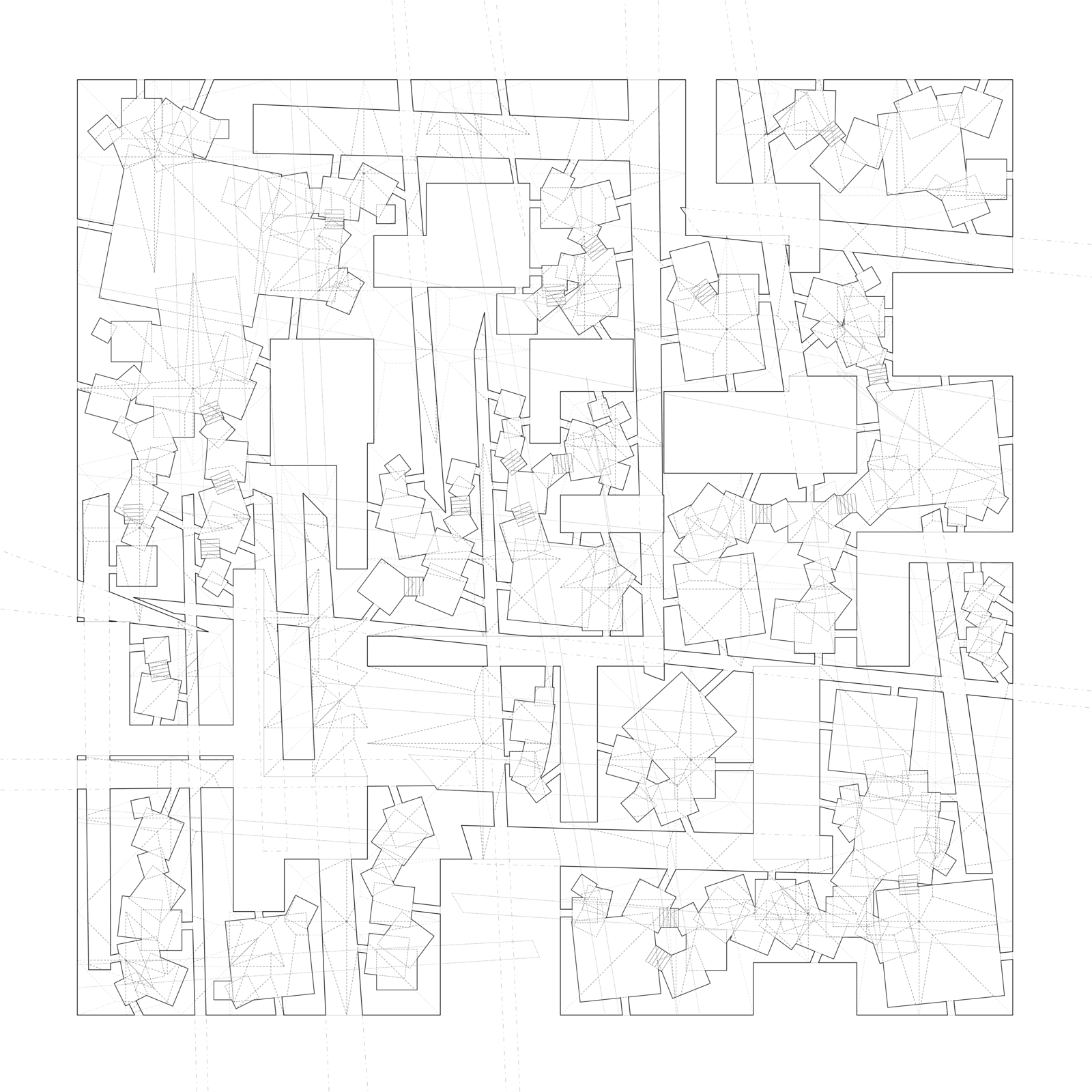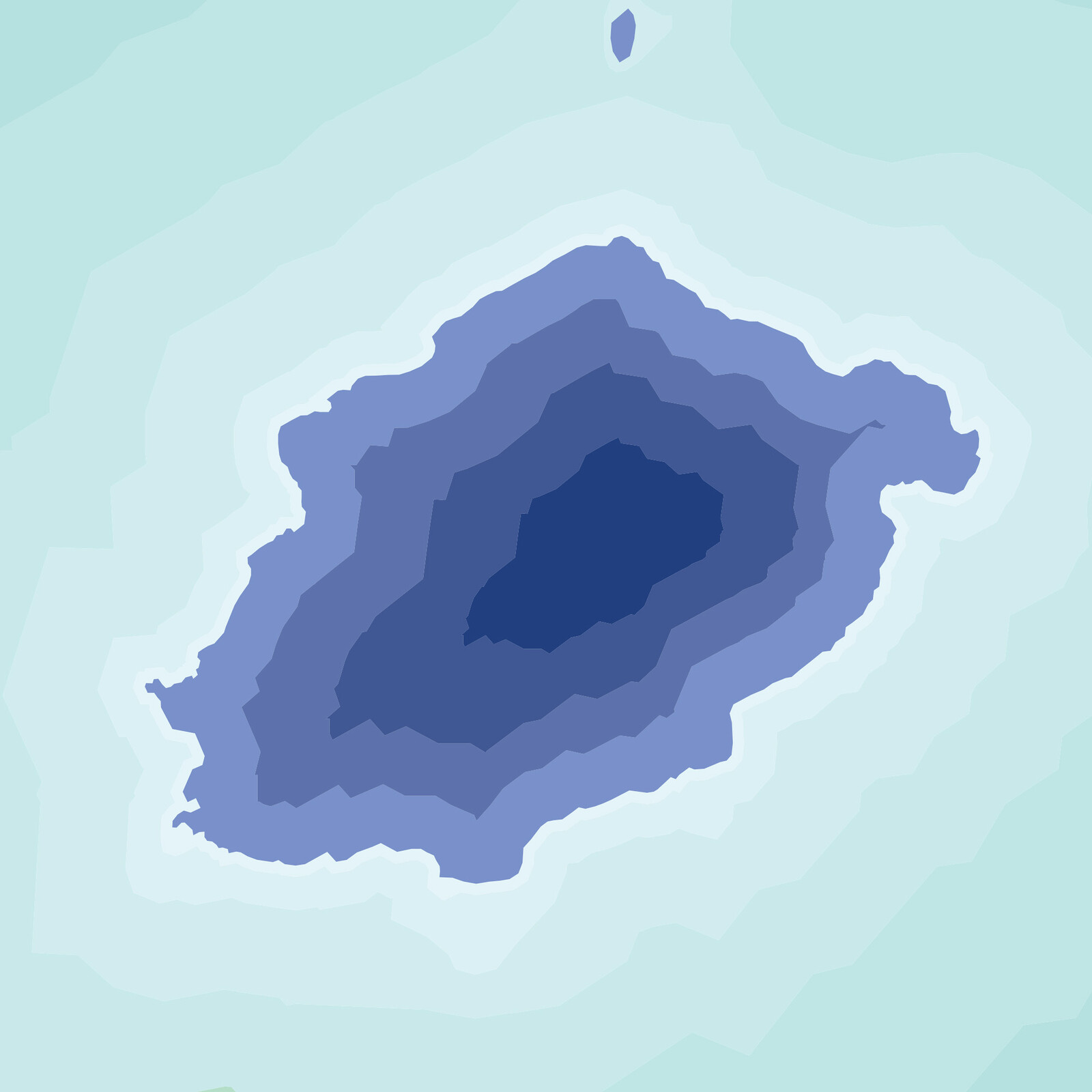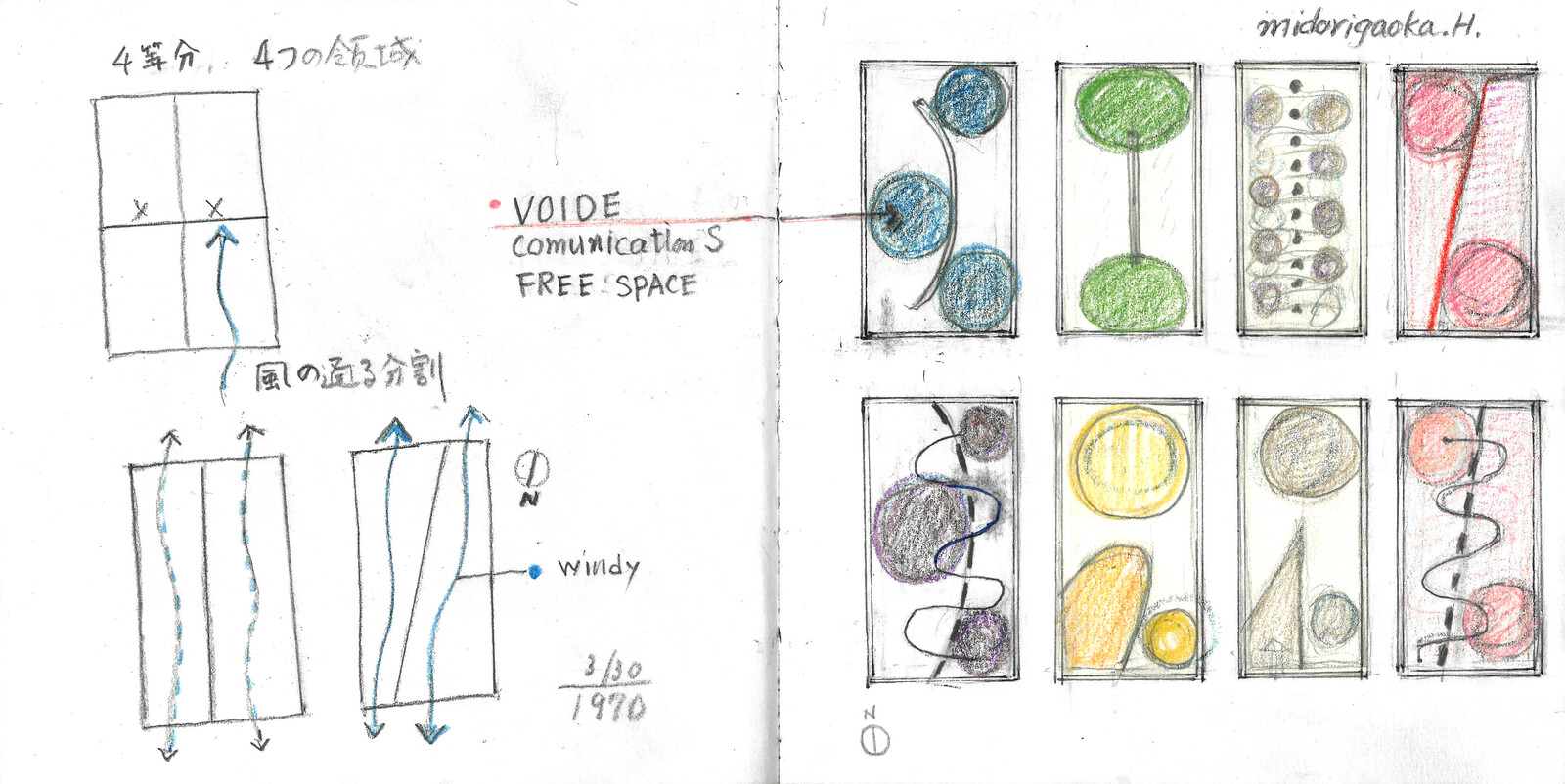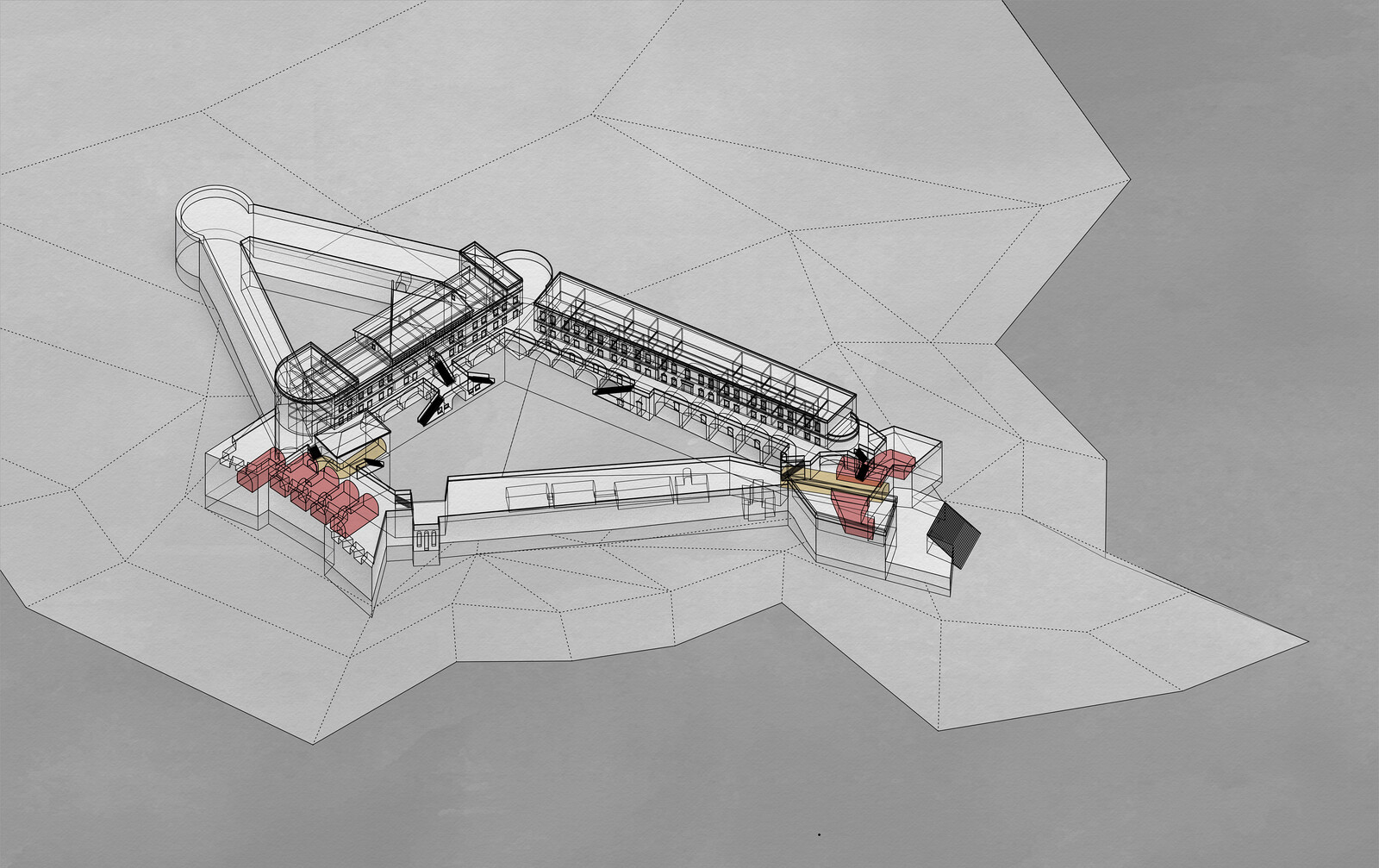This is a large and a small building at the foot of the Andes mountains. In fact, it is an aggregate of twelve different buildings separated from each other by visible seismic joints. Saying that this collection of concrete blocks is a house would be too simple. Saying that it is a palace would be too humble. Beyond its secular kind, this group of buildings is rather a cloister. It has a severe outline, (once more) a square footprint divided by an asymmetrical cross, with rooms at the perimeter and at its core. These rooms form a horizontal extension around four distinct courtyards: an elongated one following the natural terrain together with the sunrise and sunset; another long one totally flat and paved facing north; a non-directional one filled with a circular flower garden; and one more thrice its size that holds a pond and some old trees. The name of this intricate structure is given by the size of that bigger courtyard, which is equivalent to the size of a bullring (called medialuna in Chilean rural tradition). The spatial quality of every room, both interior and exterior, is punctuated by singular openings in multiple directions, thus establishing a faint functional division: there is almost no contrast between those rooms for living and those for working (from painting to gardening). In some corners there are accents of intimacy, while in others the weight, emptiness, and opacity becomes somewhat monumental. The extended format of the system makes the horizontal flatness of the roof evident, although with an almost imperceptible transition from one to two floors. Its fortress-like presence, despite the exaggerated lack of thickness of its concrete walls, is divided by horizontal strata of regular cornices. In opposition to those rough surfaces, the patio walls are crowned by bold eaves, some of them rounded, some of them straight.
Confinement is a collaborative exhibition curated by gta exhibitions and e-flux Architecture, supported by the Adrian Weiss Stiftung and the ETH Zürich Foundation.


































